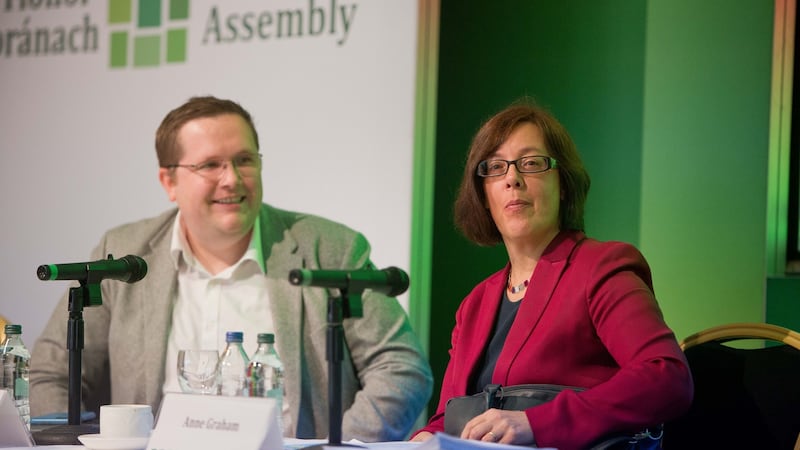Scotland is on target to generate all of its electricity from renewable sources by 2020, the Citizens’ Assembly has heard.
Under chair Ms Justice Mary Laffoy, the 99 assembly members, meeting in Malahide, Co Dublin are spending a second weekend debating on how the State can make Ireland a leader in tackling climate change.
Scotland has hit its 2020 emission targets five years early and has gone from delivering 10 per cent to 60 per cent of its electricity consumption from renewable sources over the past 15 years.

Prof Andy Kerr told the assembly members that the Scottish Assembly had set the most ambitious renewable targets possible. Instead of the UK goal of having CO2 emissions 32 per cent lower than they were in 1990, the Scottish Nationalist Party (SNP) set a target of 42 per cent.
The switch to renewables has been achieved without a detrimental impact on the Scottish economy and there is no longer a choice to be made between the environment and the economy, he said.
Prof Kerr said Scotland’s “enviable reputation” on the issue of climate change has been achieved with cross-party support. The Scottish Assembly voted unanimously in 2009 for the higher target of a 42 per cent reduction in CO2 levels by 2020 – from 1990 levels, and 80 per cent by 2020.
It was also achieved with the support of some of Scottish biggest industries including the whiskey industry.
The general public have also been broadly in support with recent surveys indicating that 75 per cent of the population are in support of measures to curb climate change.
He also said Scotland had been clever in dealing with objectors to wind farms with grants to local communities which allowed them to take an equity share in developments.
The Scottish government set a target for 500MW of locally owned energy generation facilities across Scotland by 2020, but has already exceeded this. It is resetting this target at 1,000MW (1GW) of installed capacity.
“There is clear evidence in Scotland that supporting local communities to get involved in – and benefit from – the local energy system enables a range of related social and economic co-benefits,” he said.
Prof Kerr said climate change was not pitched as being “about polar bears” but about a more sustainable way of life into the future.
Denmark
Former European commissioner for climate change Connie Hedegaard said her native Denmark was now, along with Japan, the most energy efficient country in the world.
Half of Denmark’s electricity is now generated from renewable energy sources. Since 1990, the CO2 intensity of Danish industry has dropped by more than half and the energy intensity (the amount of energy consumed by Danish industry) is down by a third.
Thirty per cent of all energy consumed in Denmark now comes from renewable energy sources.
Ms Hedegaard said the presumption that renewable energy sources would be more expensive than oil or gas has not come to pass.
Energy prices in Denmark are around the average in Europe both for industries and householders.
In addition, 60,000 jobs have been created in Denmark in clean tech companies, a significant number in a country of five million people, she said.
Ms Hedegaard, who is also a former Danish minister for climate, said taxation was crucial in changing behaviour.
She said the one thing that Ireland could learn from the Danish experience was ensuring that successive governments of whatever political persuasion should continue to implement a policy of climate change.
“There was no stop-go, there was just one major road,” she said.










